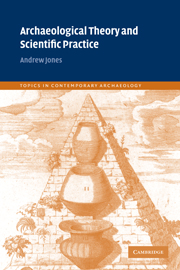Book contents
- Frontmatter
- Contents
- List of illustrations
- List of tables
- Preface
- Acknowledgements
- 1 The archaeology of ‘two cultures’
- 2 Science as culture: creating interpretative networks
- 3 Archaeology observed
- 4 Materials science and material culture: practice, scale and narrative
- 5 Material culture and materials science: a biography of things
- 6 A biography of ceramics in Neolithic Orkney
- 7 Making people and things in the Neolithic: pots, food and history
- 8 Before and after science
- References
- Index
2 - Science as culture: creating interpretative networks
Published online by Cambridge University Press: 06 November 2009
- Frontmatter
- Contents
- List of illustrations
- List of tables
- Preface
- Acknowledgements
- 1 The archaeology of ‘two cultures’
- 2 Science as culture: creating interpretative networks
- 3 Archaeology observed
- 4 Materials science and material culture: practice, scale and narrative
- 5 Material culture and materials science: a biography of things
- 6 A biography of ceramics in Neolithic Orkney
- 7 Making people and things in the Neolithic: pots, food and history
- 8 Before and after science
- References
- Index
Summary
Reviewing the record
The previous chapter broadly reviewed both the physical and the textual approaches to the archaeological record, and was intended as an assessment of many of the debates prevalent in the archaeological literature. This re-examination had an important aim: by broadly characterising the two main approaches to the archaeological record and providing a brief account of the problems with each position, I drew out the differences between the two approaches. These distinctions are crucial since I feel that the source of the rift between archaeological scientists and theoretical archaeologists lies, at a fundamental level, with the starkly different philosophical approaches each group employs as a means of understanding the past. On one side, we have a viewpoint which regards the archaeological record as the product of physical processes which can be examined empirically and objectively using the sense data derived from the description of objects. These descriptions and measurements can then be built up into generalising laws that can be applied in all archaeological contexts. On the other side, we have a viewpoint which considers the archaeological record to be the product of meaningful social action. As such it can be considered to be composed of a structured set of differences, like a text. In this case, each sentence of the text, or part of the archaeological record, is contextually distinct.
- Type
- Chapter
- Information
- Archaeological Theory and Scientific Practice , pp. 23 - 38Publisher: Cambridge University PressPrint publication year: 2001



